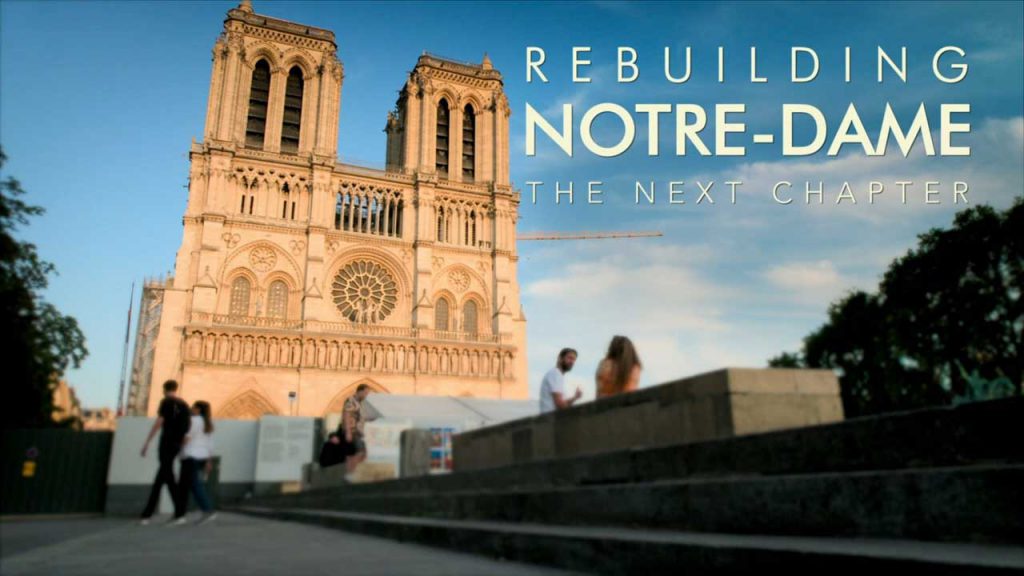Rebuilding Notre-Dame episode 2: Three years after the devastating fire, Lucy Worsley has exclusive access to the Cathedral of Notre-Dame de Paris at a key turning point of the restoration. Work to rebuild and restore the monument is being ramped up in a bid to meet the ambitious deadline to reopen it to the public in 2024.
Visiting Notre-Dame aged 16 inspired Lucy to work with historical buildings; this is a once-in-a-career opportunity to witness the rebirth of an icon close to her heart. Scaffolding now fills the interior of the cathedral, giving Lucy and the team unprecedented close-up access to every inch of the structure. Lucy meets scientists, historians and craftspeople working to return the 850-year-old Gothic masterpiece to its former glory.
The fire coated Notre-Dame with tons of toxic lead dust, so specialists are now decontaminating the site. Unique access to the stunning rose windows allows Lucy and the stained-glass historians to uncover the mysteries of these enigmatic 13th-century works of art. An unforeseen legacy of the fire threatens to destroy the remaining vaulting, so the team must develop an ingenious solution to save the stonework.
The loss of the roof during the fire reveals hundreds of large iron staples embedded in the stone along the top of the walls. Never seen before in Gothic architecture, this ancient construction practice could have helped Notre-Dame stand strong in the aftermath of the fire. And the incredible task of sourcing and cutting two-thousand perfect oaks gets underway to rebuild the world’s most complex medieval timber structure – Notre-Dame’s extraordinary roof and spire.
Rebuilding Notre-Dame episode 2
Notre-Dame de Paris, referred to simply as Notre-Dame, is a medieval Catholic cathedral on the Île de la Cité (an island in the Seine River), in the 4th arrondissement of Paris. The cathedral, dedicated to the Virgin Mary, is considered one of the finest examples of French Gothic architecture. Several of its attributes set it apart from the earlier Romanesque style, particularly its pioneering use of the rib vault and flying buttress, its enormous and colourful rose windows, and the naturalism and abundance of its sculptural decoration. Notre Dame also stands out for its musical components, notably its three pipe organs (one of which is historic) and its immense church bells.
Construction of the cathedral began in 1163 under Bishop Maurice de Sully and was largely completed by 1260, though it was modified frequently in the centuries that followed. In the 1790s, during the French Revolution, Notre-Dame suffered extensive desecration; much of its religious imagery was damaged or destroyed. In the 19th century, the coronation of Napoleon I and the funerals of many of the French Republic’s presidents took place at the cathedral.
The 1831 publication of Victor Hugo’s novel Notre-Dame de Paris (known in English as The Hunchback of Notre-Dame) inspired popular interest in the cathedral, which led to a major restoration project between 1844 and 1864, supervised by Eugène Viollet-le-Duc. During World War II, after the Allies’ 1944 victory in Europe, the liberation of Paris was celebrated in Notre-Dame with the singing of the Magnificat. Beginning in 1963, the cathedral’s façade was cleaned of centuries of soot and grime. Another cleaning and restoration project was carried out between 1991 and 2000.




